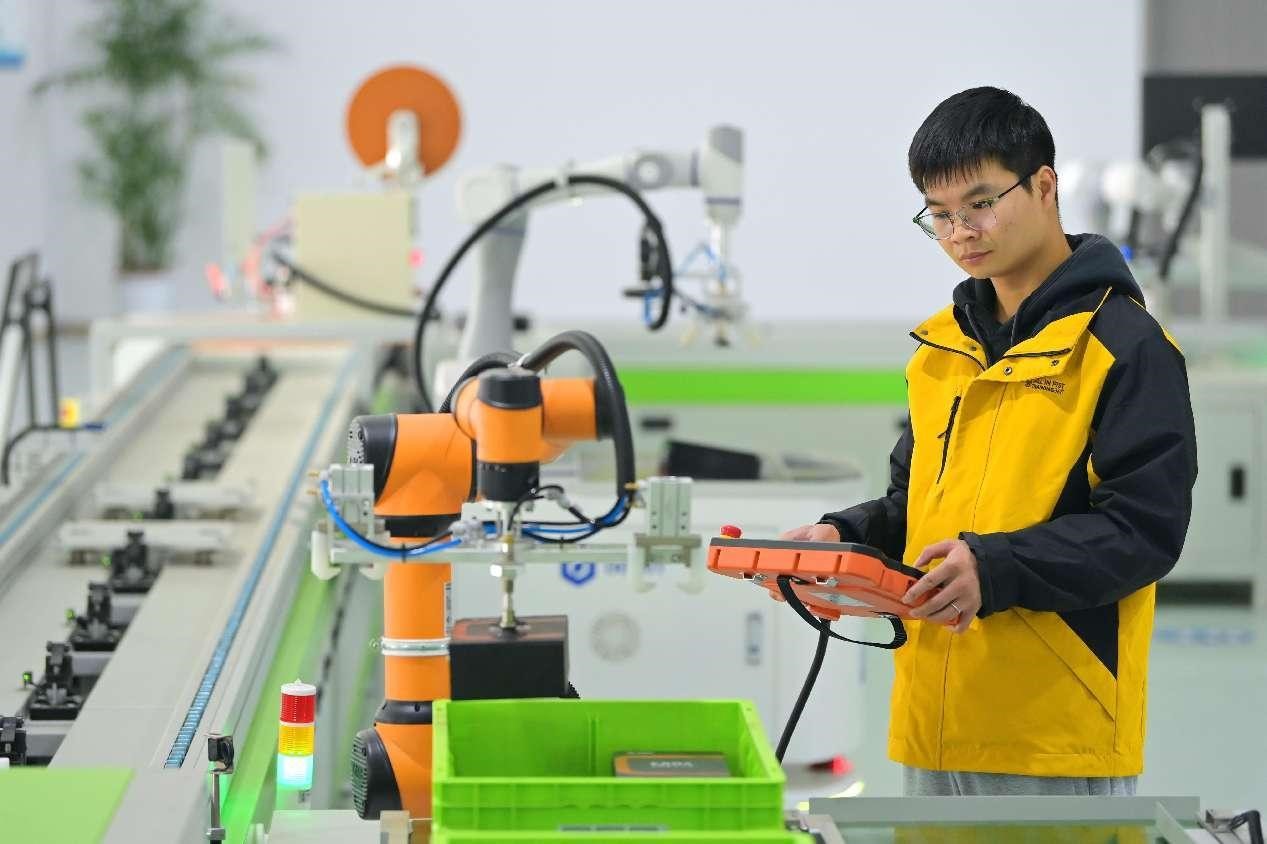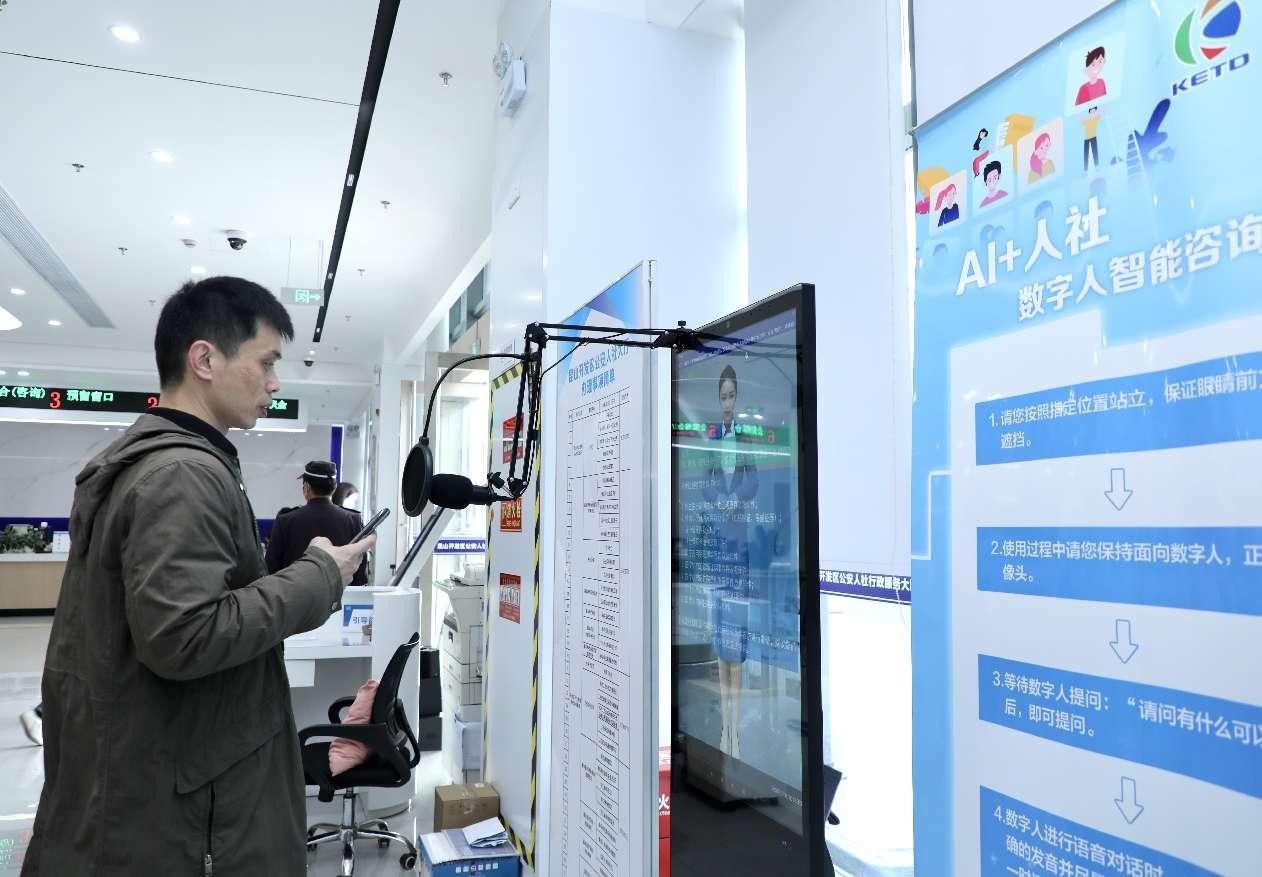China's large-scale AI models boost industrial development

A worker tests a smart manufacturing system and intelligent computing facilities in a workshop of a tech firm in Ganzhou, east China's Jiangxi province. (People's Daily Online/Zhu Haipeng)
The industrial application of China's large-scale artificial intelligence (AI) models has seen rapid development in recent years.
For instance, Chinese tech-firm Shengshu Technology and Tsinghua University recently unveiled their self-developed text-to-video AI model Vidu, which can generate a 16-second 1080p video clip with one click.
At the 2024 Beijing International Automotive Exhibition, Chinese carmakers launched multiple new models integrated with AI systems, enhancing driving experience with multisensory interactions and autonomous driving capabilities.
Humanoid robots integrated with large-scale AI models for task scheduling and application development have quickly learned how to fold clothes and sort items.
According to incomplete statistics, China has developed over 200 large-scale AI models, spanning across different sectors with expanding application scenarios.
As indicated by the latest data released by the Cyberspace Administration of China, China had validated 117 generative AI services as of March this year.

A teacher instructs students to learn with an AI-enabled system at a middle school in Huai'an, east China's Jiangsu province. (People's Daily Online/Wang Hao)
China's large-scale AI models have entered a period of rapid development, making significant advancements in technology branches such as natural language processing, machine vision, and multimodal capabilities.
With the joint efforts of enterprises, universities and research institutions, China has developed systematic R&D capabilities that encompass theoretical methods and software and hardware technologies. A number of influential large-scale AI model applications have emerged in China, establishing a technology cluster that remains at the cutting edge of innovation worldwide.
The industrial application of large-scale AI models in China follows two major paths. The first is to develop cross-sector general-purpose AI capability platforms, known as general large-scale models. These models are being adopted in a wide range of areas, from office settings and daily scenarios to healthcare, industry, and education.
The second focuses on industry-specific large-scale AI models in vertical sectors such as biopharmaceuticals, remote sensing, and meteorology. These models can leverage their expertise to provide high-quality and specialized solutions for specific business scenarios.
Liu Shijin, former deputy director of the Development Research Center of China's State Council, believes that the application of new technologies in China's huge market brings more development opportunities for digital economy. According to Liu, an increasing number of market players are driving innovation by competing in the market, which in turn provide more application scenarios for technology and engineering.
Large-scale AI models are primarily classified into cloud-side models and edge-side models, based on how they are deployed. Unlike cloud-side models that primarily cater to industrial applications, edge-side models mainly serve individual users. Since this year, Chinese manufacturers have been rolling out consumer electronics and smart terminal products equipped with large-scale AI models.

A man handles his affairs with the help of an AI-enabled system at the service hall of the department of human resources and social security of Kunshan Economic and Technological Development Zone, east China's Jiangsu province. (People's Daily Online/Yuan Xinyu)
Early this year, Chinese mobile phone manufacturer Honor launched a new generation of all-scenario operating system, featuring a large-scale intelligent question-answering model that sees 15 million monthly uses and peaks at 850,000 daily.
With the ability to automatically summarize key points from phone conversations and engage in natural dialogue to create content for video production, this model is set to elevate smartphone capabilities to a new height and drive growth in the smartphone market.
As a new generation of intelligent terminals, large-scale AI models are massively employed on intelligent connected vehicles. In addition to enabling more natural interactions with passengers in smart cabins and recognizing people and objects inside and outside vehicles more accurately, the models can also enhance the efficiency and safety of autonomous driving systems.
Industrial application has become one of the important advantages and a key driver of China's AI industry, featuring cutting-edge mobile applications, abundant data resources, diverse application scenarios, and a complete industrial chain.
An Xiaopeng, vice president of Alibaba Cloud, believes that the application of large-scale AI models in different industries can boost product competitiveness and generate new added value. Additionally, it can enhance the efficiency of enterprise innovation by improving processes and decision-making in broader and more complex scenarios.
Wu Tongning, deputy director of the AI research center at the China Academy of Information and Communications Technology, said that the emergence of numerous innovative applications has raised higher demands for support systems of AI software and hardware. The increased demand generated by new technologies will propel China's innovators in computing power, algorithms, and data.
Photos
Related Stories
- China New Growth: Transformative AI makes Chinese automobiles smarter
- AI, digital technologies inject new impetus to cultural tourism boom
- China actively addresses global health challenges through innovation
- China embraces AI boom, diverse application scenarios
- China-developed text-to-video large AI model unveiled in Beijing
Copyright © 2024 People's Daily Online. All Rights Reserved.









